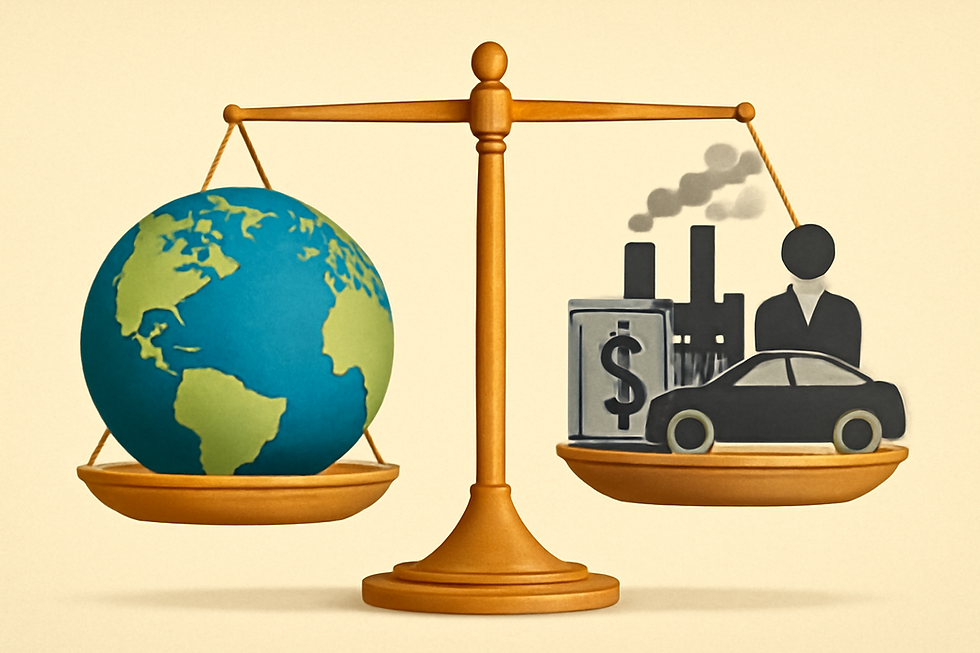Trump’s Tariff Policy in Europe
- Prism Group

- Apr 1
- 3 min read
After a maelstrom of U.S. presidential actions over the past 72 days, President Trump has been clear about his willingness to use tariffs to achieve various priorities, objectives, and campaign promises. We have also seen, via the financial market reaction and various concessions from allied nations, that tariffs and even the threat of tariffs provide Trump the leverage he wants; tariffs allow him to force parties to the negotiation table.
His endgame: Trump ultimately wants lower tariffs globally but is willing to inflict short-term economic pain and disorder to reach that goal.
The upcoming implementation of what Trump has called “Liberation Day” retaliatory tariffs on April 2 threatens to alter global status quo trade dynamics, and European governments and industries are preparing various strategies to safeguard their economic interests. Whatever course they take, Europe must be ready for a U.S. administration that views tariffs as a primary tool of economic statecraft with the potential to upend the global trade order and alliances.
Understanding the Trump Administration’s Approach to Tariffs
Trump Sees Tariffs as Blunt, Effective Weapons
The U.S. President truly believes in the power of tariffs. He has long favored direct and aggressive economic tools—tariffs are, in essence, the “brass knuckles” of his trade policy. Unlike previous administrations that saw tariffs as short-term negotiating tools or a means of targeted pressure, Trump embraces them as a long-term mechanism to reshape global trade dynamics and expects them to bring substantial revenue and manufacturing to the United States.
Tariffs Are Transactional and Flexible—Until They’re Not
Historically, Trump has used tariffs as bargaining leverage. If concessions are secured, tariffs can be modified, reduced, or removed. If negotiations stall, they can be intensified. His view is deeply transactional: every tariff is a tool to extract something in return. Europe should expect sudden shifts, where tariff schedules and rates may be adjusted based on White House priorities and feelings toward retaliation.
The Administration Wants to Reshape Europe, Not Just Trade
Europe should not underestimate how this administration views the EU. Trump and his most senior advisors do not simply view Europe as a trade competitor—they see the continent as fundamentally mismanaged. The administration’s perspective is that Europe’s economic struggles are self-inflicted through excessive social welfare policies, weak immigration enforcement, and bureaucratic inefficiency. Trump has personal grievances with prominent European leaders and is skeptical of Europe’s strategic autonomy, particularly in balancing relationships with the U.S., China, and Russia. From a MAGA standpoint, Europe wants to “have its cake and eat it too,” benefiting from U.S. economic ties while maintaining trade and energy ties with its adversaries. This ideological divide shapes the administration’s hardline approach.
Strategic Responses
Prepare for the Long Haul
Europe should prepare for sustained trade volatility over the next four years. Rather than viewing tariffs as temporary disruptions, businesses and policymakers must treat them as a structural shift in transatlantic economic relations. This means reassessing market strategies, pricing models, and investment priorities with a long-term focus to remain competitive in an environment where trade policy is dictated by political leverage rather than economic stability.
Beginning of the End of Rules-Based Economic Order
The post-war economic order, long underpinned by U.S. leadership and institutions like the WTO, is being deliberately challenged. The Trump administration has shown little interest in upholding global trade rules and has instead pursued unilateral action. Europe should not assume that multilateral frameworks will offer protection for the foreseeable future.
Leverage U.S. Congressional Pressure
While Trump has signaled his willingness to endure market and consumer pain, it remains to be seen whether Congress members facing voters in 2026 will be less tolerant. Many are already signaling concerns about the economic impact of tariffs. European companies should proactively engage with U.S. lawmakers, emphasizing how tariffs harm both American and European businesses, consumers, and workers. The most effective counterbalance to White House trade policy will come from Republican Congressional pressure, and European firms should not hesitate to build alliances that apply political pressure.
Closing Thoughts
Europe faces a challenging trade environment, but strategic preparation will mitigate risks. Expect turbulence, prepare for long-term shifts, and engage with allies in Washington to influence the policy debate—the tariff fight is just beginning.



Comments